At the end of March, I visited the city of Ghent in Belgium for a day trip. We had had perfect weather the previous day in Bruges, and the weather was meant to be even better on this day, but it ended up staying cloudy. The sun makes a world of difference, but at least we did not get rained on during our day trip to Ghent. The first thing we did after we navigated our way to use the trams to get to the centre of Ghent from the station was to do a boat tour. We were down by the picturesque canal anyway, so it made sense to get it out of the way as there was a boat filling up.
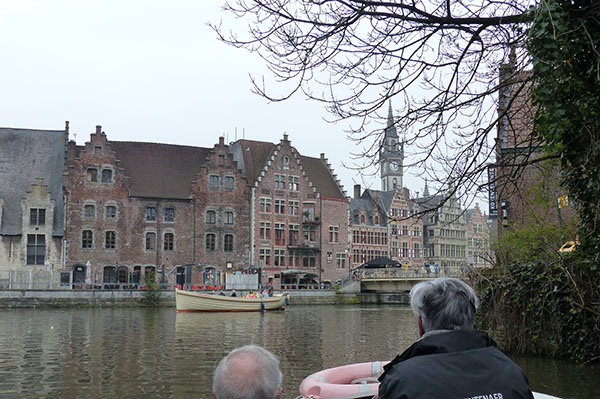
The driver of the boat and tour guide had to speak the tour in five different langauges including Flemish, French, German, and English. So, the speaking was done very quickly for each langauge. We were shown the main seafront with the old medieval buildings, many of which are now restaurants. The Kornmarkt has the post office with the clock tower, which apparently was modelled after London's Big Ben. One of the buildings on the seafront is the canal workman's guild, which got rich off tolling the canals. Another building was the granary to store in grain for the population of the city, which thrived during the medieval times. I am sure that the guide mentioned other bits of information about the buildings, but I cannot remember them.

The first bridge is St. Michael's Bridge, with the cathedral of the same name shown here on the right. To the left of the bridge, visitors can get a glimpse of the three towers in a row: the belfry, St. Nicholas' church, and St. Bavo's Cathedral. This is a symbol of Ghent and is carved on St. Michael's Bridge.
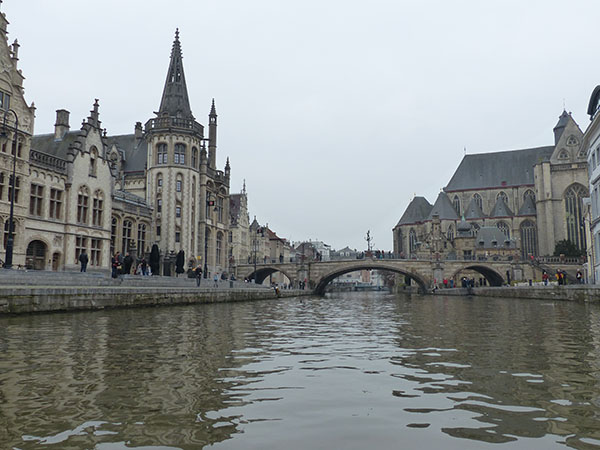
Near St. Michael's Bridge is a piece of street art created after the film produced and directed by George Clooney, "The Monument's Men". A painting is featured in the film by Van Eyck called "The Mystic Lamb/Ghent Altarpiece" is used extensively in the film. This painting is located in Ghent. I am sure that I have seen this film, but it did not really stick with me. The best photo I took of the artwork was actually from the bridge and not from the canal with people's heads in my way.
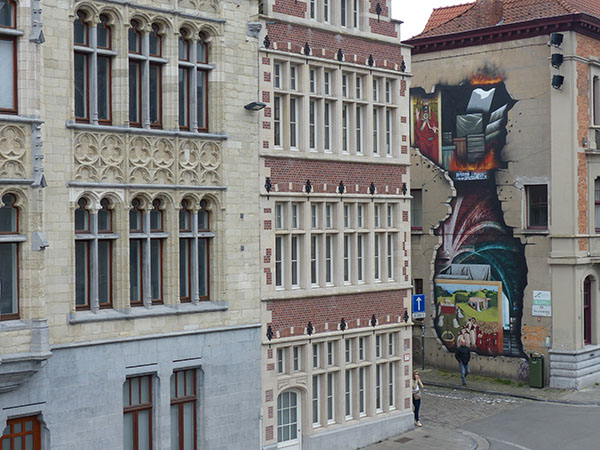
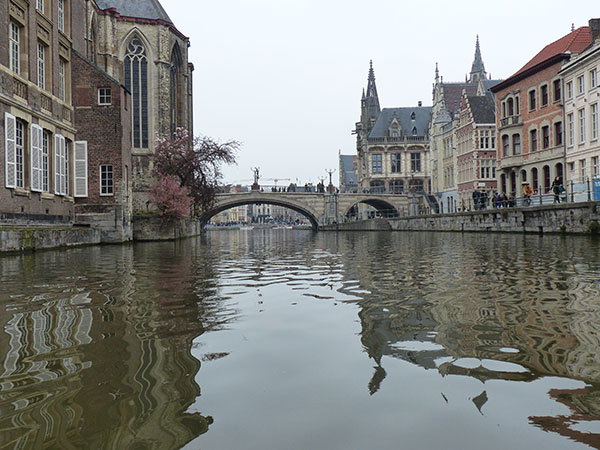
The most attractive part of the canal is along Korenlei and Graslei, which are two roads along the canal just south of the castle and comprised of cobbled stone streets and medieval buildings.

A little further along, the canal branched and we explored one part before turning around to explore the other part of the canal. Some of the buildings backing onto the canal are pubs and restaurants.


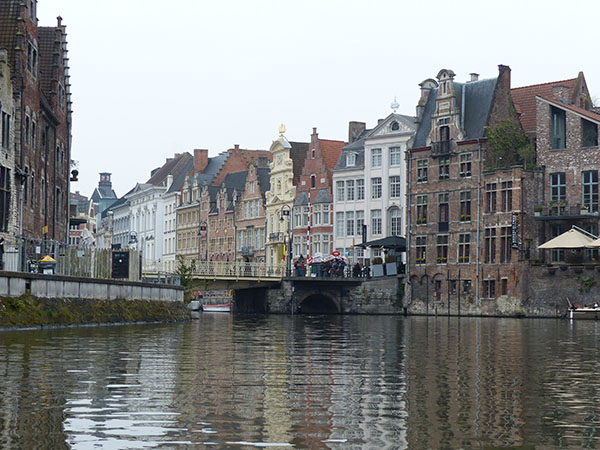
Another impressive and stunning view for us was the castle of Ghent (also known as Gent Gravensteen), positioned along the bank of the canal.

We passed monastaries, a bridge with some interesting sculptures of Charles V's life, and gallery, and part of the old city walls. Then, we finally came to the end, which was the exit port of Ghent.

This exit of the canal would connect with the sea. That is as far as we could go.

The guide had to be quiet on the way back as we passed through the affluent areas of Ghent because they had complained about the tour boats making too much noise. I suppose that they compromised by giving the discussion on the way down and had to be quiet on the way back.
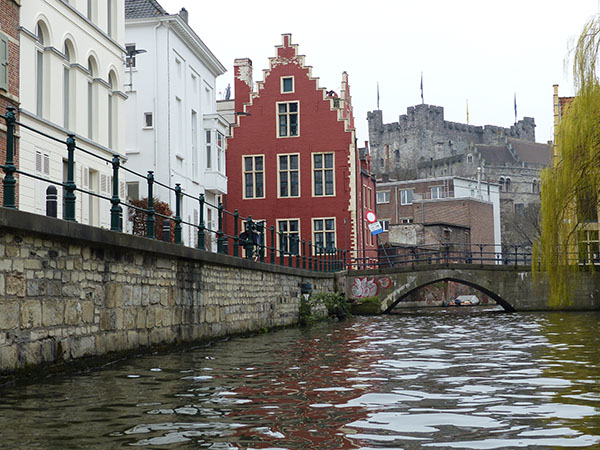
And on the way back, we were shown the smallest jail cell under one of the bridges.

That concludes the boat tour. The boat tours start from Graslei or Korenlei and last fourty-five minutes. They do cover several languages. The cloudy weather was a pity because Ghent looks much nicer in the sun.
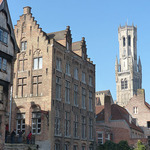

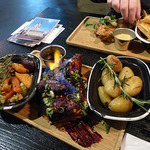
Leave a comment